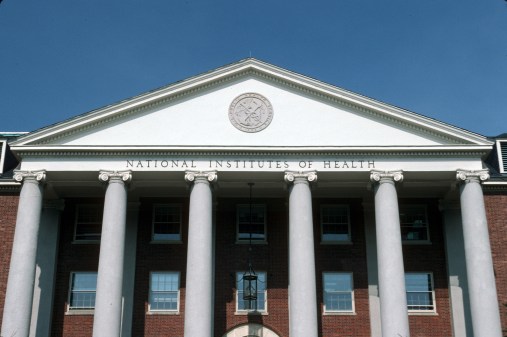NIH launches coronavirus research platform, but hospital data sharing could take time

The National Institutes of Health face the challenge of brokering data-use agreements with hospitals as they develop a COVID-19 patient data management platform for researchers. To help with that process, NIH has launched the National COVID Cohort Collaborative (N3C) for collection and analysis of clinical, laboratory and diagnostic data from health-care institutions.
Built on the Palantir Foundry platform NIH has used for more than three years for internal research, N3C will support universities and grantees studying coronavirus health risk factors and treatments.
But NIH has never attempted anything like N3C. And the platform is only as good as the data it contains — data obtained through legal agreements that will take through the end of 2020 to secure, according to a person familiar with the project.
Of the 62 sites in the Clinical and Translational Sciences Awards (CTSA) program — funded by the National Center for Advancing Translational Sciences (NCATS) that also funds N3C — 37 have already signed data-use agreements, the person said. And, of those, three or four have begun sharing data with N3C since Palantir won the five-month, $2.03 million task order on its existing NIH contract May 4.
About 200 researchers can access N3C with 500 more onboarding in the next month and gradual increases planned thereafter.
N3C standardizes incoming hospital data, subsets of which researchers may request by logging into the platform. A central institutional review board at Johns Hopkins University approves data access for each researcher, at which point they may continue their work securely inside the cloud-based, federally authorized platform.
The data never leaves N3C, and everything is tracked by audit logs — as any research related to treatments like vaccines is a target for foreign adversaries, the person familiar with the project said.
“NCATS initially supported the development of this innovative collaborative technology platform to speed the process of understanding the course of diseases, and identifying interventions to effectively treat them,” said Director Dr. Christopher Austin in the announcement. “This platform was deployed to stand up this important COVID-19 effort in a matter of weeks, and we anticipate that it will serve as the foundation for addressing future public health emergencies.”
NIH has had to move more quickly than usual while still respecting privacy laws, the person familiar with the project said. As a result, data collected retains only two of 18 Health Insurance Portability and Accountability Act (HIPAA) elements: patient ZIP code and dates of service.
Growing the dataset — thereby increasing the patient sample size — is critical to answering research questions concerning imaging, precision medicine and genomics.
N3C doesn’t currently interact with HHS Protect, the Department of Health and Human Services’ system informing White House pandemic decisions that Palantir also has a hand in. But there have been discussions of a limited data-use agreement between the two systems and others, the person familiar with the project said.
For now, HHS Protect will provide a real-time common operating picture of the coronavirus, and N3C will remain geared toward long-term research.





